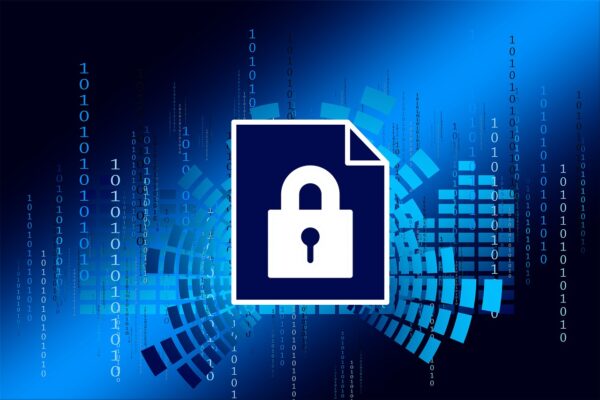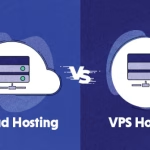Web security and privacy are paramount in today’s digital landscape, where the increasing reliance on web applications and services exposes users and organizations to various cybersecurity threats. Evolving threats and the need for robust protection have given rise to best practices for securing web applications and complying with privacy regulations like the General Data Protection Regulation (GDPR) and the California Consumer Privacy Act (CCPA).
Evolving Cybersecurity Threats

Cross-Site Scripting (XSS): Attackers inject malicious scripts into web pages viewed by other users. This can lead to data theft, session hijacking, and unauthorized actions.
SQL Injection: Attackers insert malicious SQL code into input fields, exploiting vulnerabilities in databases to access sensitive data.
Cross-Site Request Forgery (CSRF): Attackers trick users into performing actions they didn’t intend to, potentially leading to unauthorized transactions or data manipulation.
Phishing and Social Engineering: Attackers use deceptive tactics to trick users into revealing confidential information or performing actions they shouldn’t.
Data Breaches: Unauthorized access to sensitive data can lead to identity theft, financial losses, and reputation damage.
Best Practices for Securing Web Applications:
Input Validation
Input validation is a crucial aspect of web security. It involves validating and sanitizing user input before it is processed by the application’s backend or stored in a database. Proper input validation helps prevent a range of security vulnerabilities, including SQL injection, cross-site scripting (XSS), and other types of attacks that exploit poorly validated input.
Here’s a closer look at the importance of input validation and some best practices:
Importance of Input Validation
Preventing Attacks: Attackers can manipulate input fields to inject malicious code or trigger unexpected behaviors in an application. Proper input validation helps block these attacks.
Data Integrity: Invalid or improperly formatted input can lead to data corruption or inconsistencies in databases and application logic.
User Experience: Validating input ensures that users receive appropriate feedback and prevents errors that could confuse or frustrate them.
Reputation Protection: Successful attacks resulting from poor input validation can damage an organization’s reputation and erode user trust.
Input Validation Best Practices
Use Whitelisting: Define a set of allowed characters, patterns, or formats for each input field. Reject input that doesn’t adhere to these rules.
Escape Output: Sanitize and escape any data before displaying it to users. This helps prevent XSS attacks by rendering malicious code harmless.
Validate All Input: Validate data from various sources, including form fields, URL parameters, cookies, and HTTP headers.
Server-Side Validation: Rely on server-side validation as client-side validation can be easily bypassed.
Parameterized Queries: When interacting with databases, use parameterized queries or prepared statements to prevent SQL injection attacks.
Limit Input Length: Define maximum lengths for input fields to prevent buffer overflow and data truncation vulnerabilities.
Authentication and Authorization

Authentication and authorization are fundamental components of web security that work together to ensure that users have secure access to the right resources and functionalities within an application. Let’s delve into what authentication and authorization are, their differences, and best practices for implementing them effectively:
Authentication
Authentication is the process of verifying the identity of a user or system attempting to access a web application. It ensures that users are who they claim to be before granting them access.
Common authentication methods include:
Username and Password: The most common form of authentication, where users provide a unique username and a corresponding password.
Multi-Factor Authentication (MFA): Requires users to provide multiple forms of verification, such as a password and a one-time code sent to their mobile device.
Biometric Authentication: Utilizes unique physical or behavioral attributes like fingerprints, facial recognition, or voice recognition for user identification.
Authorization
Authorization is the process of determining what actions or resources a user is allowed to access within an application. Once a user is authenticated, authorization defines the permissions and privileges they have based on their role or specific attributes. Authorization mechanisms control who can do what within the application.
Common authorization models include:
Role-Based Access Control (RBAC): Users are assigned roles, and roles have specific permissions associated with them. Users inherit permissions based on their assigned roles.
Attribute-Based Access Control (ABAC): Access is determined based on attributes associated with users, objects, and the environment. Policies define conditions for access.
Discretionary Access Control (DAC): Users have control over their own resources and can grant or deny access to others.
Mandatory Access Control (MAC): Access is determined by a central authority based on security labels and clearances.
Best Practices for Authentication and Authorization
Separation of Concerns: Keep authentication and authorization mechanisms separate to ensure modular and maintainable code.
Least Privilege Principle: Grant users the minimum level of access necessary to perform their tasks. Avoid giving unnecessary permissions.
Strong Password Policies: Enforce strong password requirements, password expiration, and lockout mechanisms to prevent brute-force attacks.
Regularly Review Permissions: Periodically review and audit user permissions to ensure they are accurate and up-to-date.
Session Management: Implement secure session management to prevent session hijacking and ensure sessions expire after a period of inactivity.
Encryption
Encryption is a critical aspect of web security that involves transforming data into a secure format to prevent unauthorized access, data breaches, and eavesdropping. It ensures that sensitive information remains confidential and secure while in transit and at rest. There are two main types of encryption: symmetric encryption and asymmetric encryption.
Symmetric Encryption
In symmetric encryption, the same key is used for both encrypting and decrypting data. It’s efficient and fast, but the challenge lies in securely sharing the encryption key between parties. If an attacker gains access to the key, they can decrypt the data.
Asymmetric Encryption
Asymmetric encryption, also known as public-key encryption, uses a pair o
keys: a public key and a private key. The public key is used to encrypt data, while the private key is used to decrypt it. The public key can be freely distributed, but the private key must be kept secret. This solves the key-sharing problem in symmetric encryption.
Use Cases for Encryption
Data in Transit: Encrypting data during transmission over networks (e.g., HTTPS) ensures that it cannot be intercepted or tampered with by malicious actors.
Data at Rest: Encrypting data stored on servers or databases prevents unauthorized access if the physical storage media or the database is compromised.
End-to-End Encryption: This ensures that data remains encrypted from the sender’s end to the recipient’s end, with intermediaries unable to access the unencrypted content.
File Encryption: Encrypting individual files or folders adds an extra layer of protection to sensitive documents.
Database Encryption: Encrypting specific fields or entire databases helps protect sensitive user data stored in databases.
Best Practices for Encryption
Use Strong Algorithms: Choose encryption algorithms that are widely accepted and considered secure, such as AES (Advanced Encryption Standard).
Key Management: Implement robust key management practices to ensure secure key generation, storage, rotation, and distribution.
Secure Key Exchange: For asymmetric encryption, use secure methods to exchange public keys, such as through digital certificates.
HTTPS: Implement HTTPS using SSL/TLS certificates to encrypt data transmitted between web servers and clients.
End-to-End Encryption: If your application handles user-generated content or messaging, consider implementing end-to-end encryption to ensure data privacy.
Secure Implementation: Implement encryption correctly, following established best practices, and avoid creating custom encryption algorithms.
Privacy Regulations

General Data Protection Regulation (GDPR): Enforced in the European Union (EU), GDPR grants individuals greater control over their personal data. It requires businesses to obtain clear consent for data processing, provide data breach notifications, and allow individuals to request data deletion.
California Consumer Privacy Act (CCPA): Enforced in California, CCPA gives consumers more control over their personal information collected by businesses. It grants the right to know what data is collected and to opt out of its sale.
Implications and Compliance
Global Impact: GDPR’s extraterritorial scope means that non-EU businesses serving EU citizens must also comply, making it a global standard for data privacy.
Data Minimization: Both GDPR and CCPA emphasize collecting only necessary data and ensuring it’s stored securely.
User Rights: Both regulations give users rights to access their data, rectify inaccuracies, and request deletion.
Breach Reporting: GDPR mandates reporting data breaches within 72 hours, enhancing transparency and accountability.
Consent Management: Businesses must ensure clear, informed, and freely given consent for data processing.
Data Protection Officers: Some organizations are required to appoint Data Protection Officers to oversee compliance.
Discover more from Wits Technologies Ltd
Subscribe to get the latest posts sent to your email.





